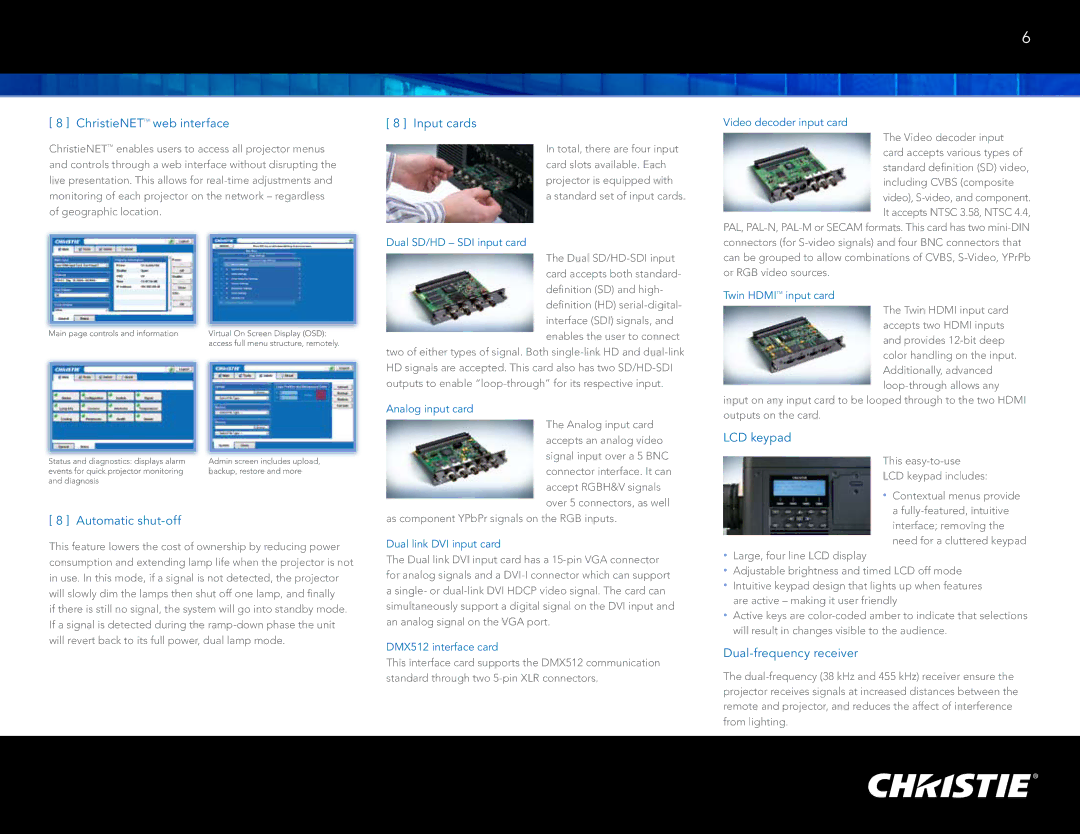M Series specifications
Christie Digital Systems has made a significant impact in the world of projection and display technology with its M Series projectors. Renowned for their versatility and high performance, the M Series encompasses a range of digital projectors that cater to various professional and commercial applications, including corporate events, educational settings, and large-scale installations.One of the defining features of the M Series is its exceptional brightness. Many models in this line offer brightness levels ranging from 6,500 to 12,000 lumens, making them ideal for use in environments with significant ambient light. This high output ensures vibrant, sharp images that maintain clarity even in larger venues. The projectors are equipped with advanced imaging technology, including 3DLP® technology, which delivers accurate color reproduction and impressive contrast ratios. Users can expect stunning visuals that draw in audiences and enhance presentations.
The M Series projectors also feature flexible connectivity options, allowing seamless integration into various setups. They support multiple input interfaces, including HDMI, 3G-SDI, and DisplayPort, ensuring compatibility with a wide range of devices. Whether connecting to laptops, video sources, or other equipment, the connection remains straightforward and hassle-free.
Another prominent characteristic of the M Series is its lens versatility. The projectors support a variety of lens options, enabling users to customize the projection to fit different environments and requirements. Whether projecting from a short distance or requiring a long throw for larger venues, the M Series offers compatibility with various lens types, ensuring optimal image quality and size according to the intended application.
In addition to this, the M Series emphasizes ease of use and maintenance. With features like a built-in media player and a user-friendly interface, operators can easily manage content and control settings. The projectors are designed with reliability in mind, featuring robust construction and extended lamp life, reducing the frequency of replacements and lowering overall operating costs.
Overall, the Christie M Series stands out in the digital projection market for its advanced technology, brightness, connectivity, and flexibility. These projectors not only meet the demands of professional environments but also provide an impressive visual experience that captivates audiences, making them a preferred choice for those seeking high-quality projection solutions.

